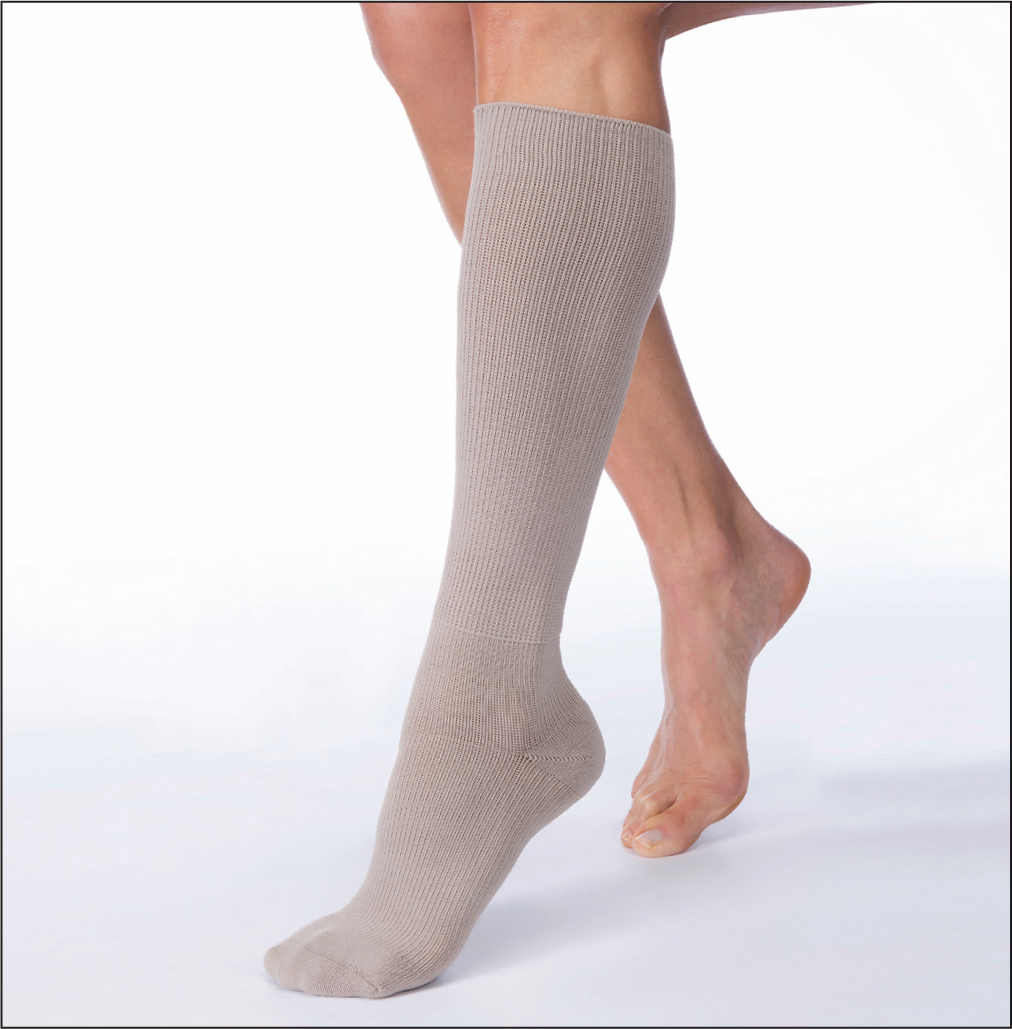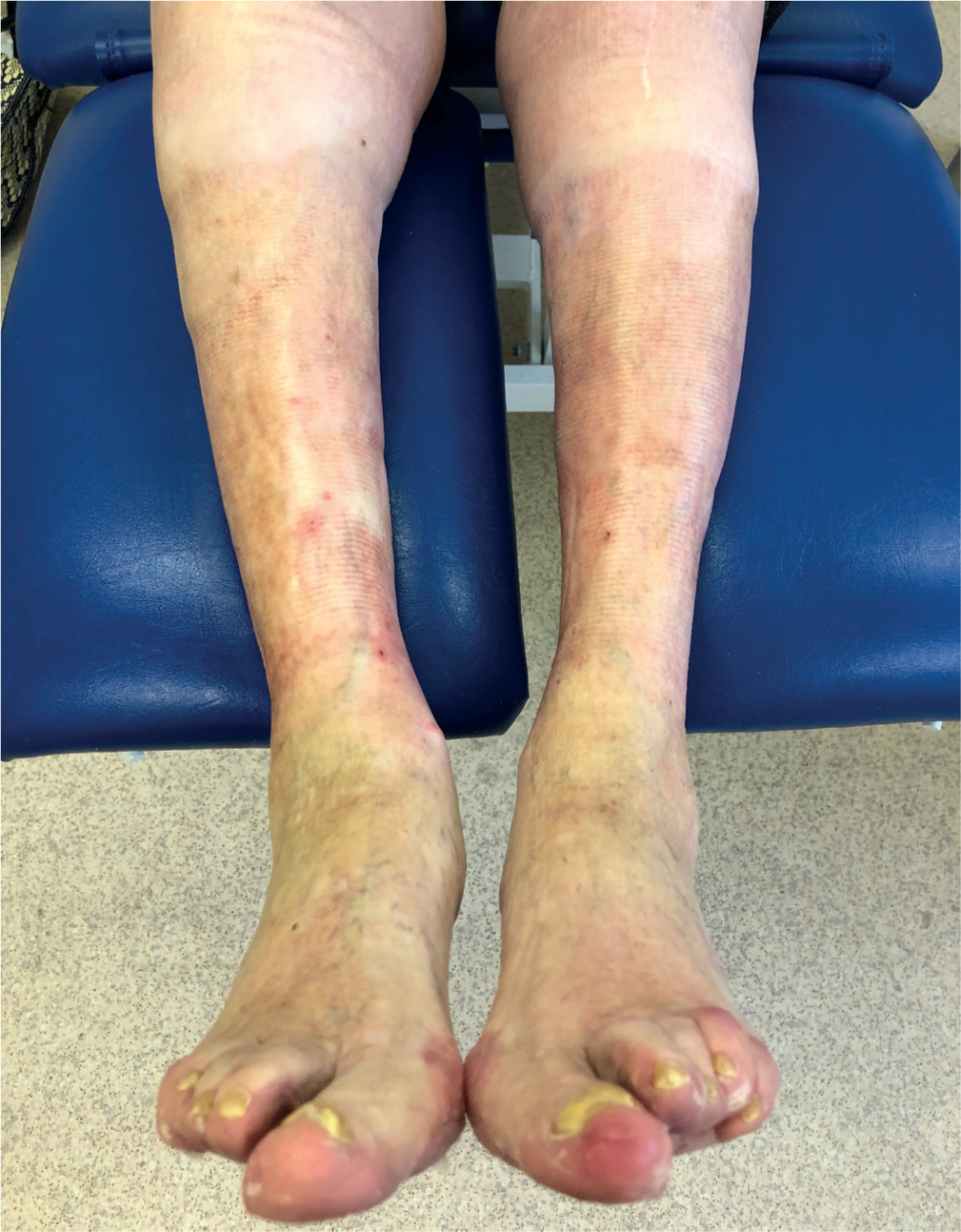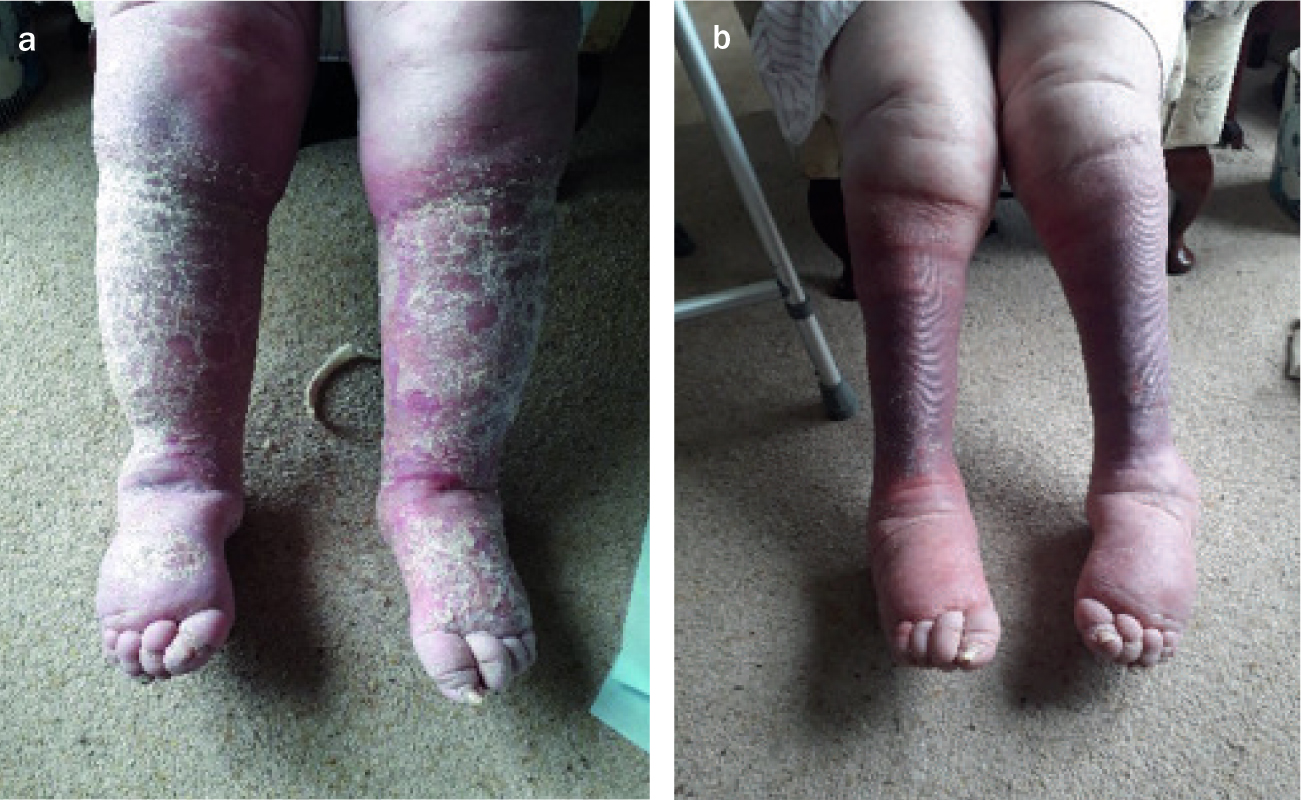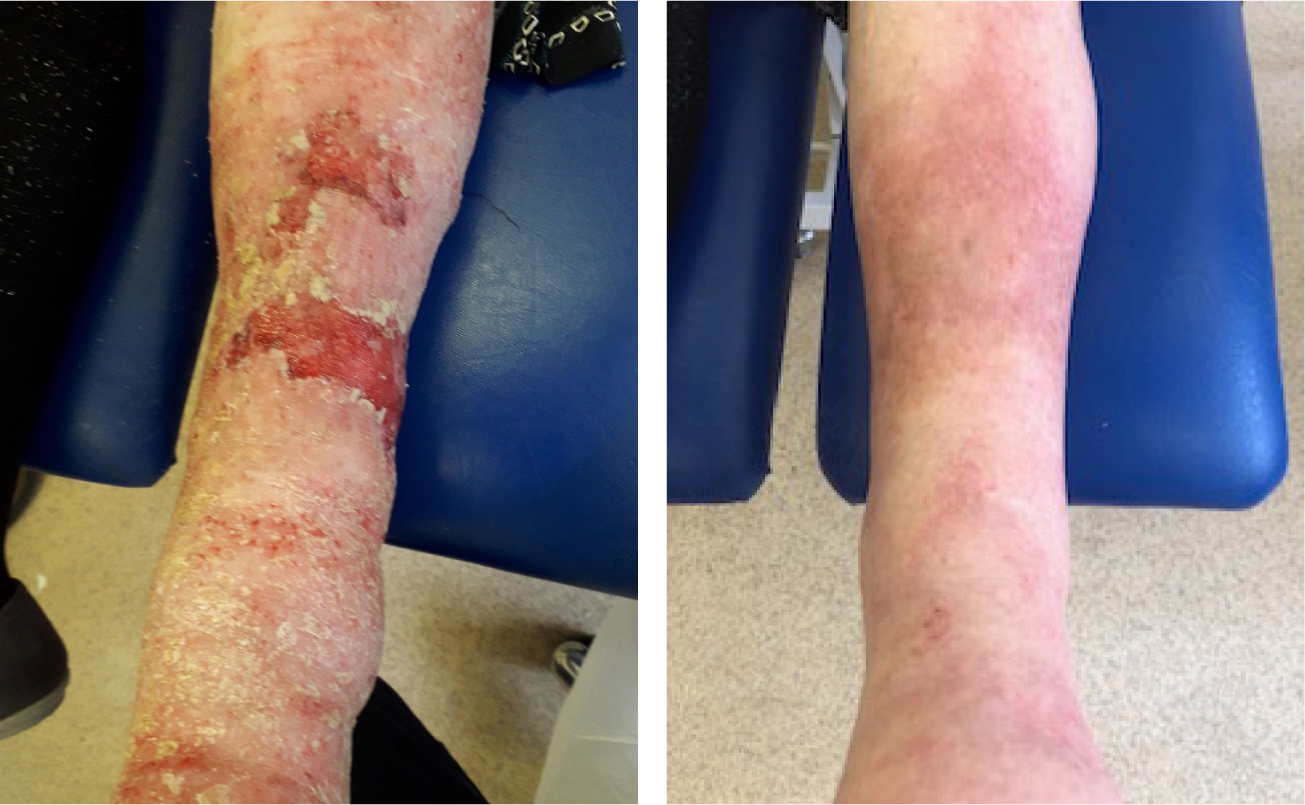Lower limb oedema can be classed as acute or chronic. It is normally classified as chronic, if present for 3 months or longer (Todd, 2012). Oedema can be seen in the lower limb when there is an excess of interstitial fluid caused by an imbalance between capillary filtration and lymph drainage (Mortimer and Levick, 2004). Chronic oedema often indicates venous insufficiency and, if left untreated, can result in chronic inflammation, skin changes and ulceration. There is also an increased risk of infection in the swollen area, especially if the skin is broken (International Wound Infection Institute, 2016). To help prevent complications of lower limb oedema, early diagnosis and management is crucial (Hofman, 2010). According to Guest et al (2017), a comprehensive, holistic assessment is required to ensure that an accurate diagnosis is reached and treatment is implemented promptly to reduce the burden of any complications.
The majority of lower limb ulcers are venous in origin, but a small number are caused by arterial disease. It is vital therefore to exclude any arterial disease as part of the assessment process. This can be achieved by completing a full lower limb vascular assessment; as part of this assessment, an ankle brachial pressure index (ABPI) using Doppler will ensure that compression will not be applied to an arterially compromised limb (Yarwood-Ross, 2013).
Traditional management of ulceration and lower limb oedema involves regular application of compression bandaging and wound care products, followed by compression hosiery when the ulcer is healed. This is highly labour- and resource-intensive and can be disruptive to the patient's life.
More recently, ulcer care kits have been introduced to heal ulceration with low levels of exudate, which can in some cases be part of the patient's self-care programme. However, if there is oedema present or the patient has strength or dexterity issues, or if access to specialist nurses is difficult, or if the skin is too fragile to allow traditional methods of compression, the JOBST FarrowWrap 4000 is a suitable alternative. It has the added advantage of being able to support self-care for patients who would otherwise be reliant on input from health professionals.
Self-care is an important aspect of managing chronic oedema (Todd et al, 2017). Ulceration and chronic oedema management relies heavily on patients' concordance with limb elevation, good skin care, exercise and healthy eating and a tolerance to compression garments; all required to achieve a positive outcome.
JOBST FarrowWrap 4000 is designed to encourage self-care, and the simplicity of application of the JOBST® FarrowHybrid® and wrap, particularly for those with limited hand strength and dexterity, is a clear advantage.
The health professional needs to listen and involve the patient in their care, to obtain concordance and good outcomes in reducing oedema and treating any leg ulceration. Patients then feel empowered with the information given, thereby increasing the likelihood of compliance.
Challenges
The financial burden to the NHS of treating leg ulcers (in terms of healing rates, duration of ulcers and recurrence rates) is estimated to be £1.8 billion per year and accounts for 13% of all district nurse visits (Guest et al, 2017). While 93% of ulcers are likely to heal within a 12-month period, 7% remain unhealed after 5 years and as many as 30% recur within 3 months after healing (Franks et al, 2016).
Experientially, the long-term physical, psychological and social burdens for the patient are staggering. However, compounding these challenges are an increasing population and an age-related increase in venous ulcers, notwithstanding the embarrassment of being involved with treatment, waiting for appointments, dressing changes, being unable to wear appropriate footwear/clothes, all of which lead to problems with patients' social lives or remaining in employment (Dowsett, 2009; Green et al, 2014). These experiences can cause financial and emotional burdens, which inevitably have a negative impact not only on the patient, but also on their loved ones (Miller and Kapp, 2015).
JOBST FarrowWrap 4000
JOBST® FarrowWrap® was introduced in 2008 in the UK. It is a wrap compression system that simulates short-stretch bandaging providing graduated compression, and is used for chronic oedema and venous insufficiency. A decade later, JOBST FarrowWrap 4000 (Figure 1) was introduced. The NHS spends approximately £9 million on compression bandages annually (Hallas et al, 2017). Wrap compression systems have been suggested to be a cost-effective option for some patients (Todhunter, 2017). The authors found it to be a practical alternative to compression bandages when caring for patients both in the clinic and in their homes.
The product is made up of a wrap and sock and is suitable for patients with mild-to-moderate oedema, with or without an ulcer being present. The JOBST FarrowWrap 4000 leg-piece is an adjustable compression system for the management of venous leg ulcers. It is available in four sizes, two lengths and two colours. It consists of an inner sleeve and four short-stretch bands that are secured in place with VELCRO® fasteners. The inner sleeve stops the device from falling off and spinning during the application process. It is designed to deliver 30-40 mmHg of graduated compression, but can be adjusted to provide reduced compression if required.
The two lower bands should be fixed at the same time by pulling each band with either hand to near or end stretch, then again with the two top bands, making sure that there is no gapping between bands.
The system comprises an easy-to-apply leg-piece for the lower limb and one wide-width JOBST FarrowHybrid 20-30 mmHg foot compression; this is a sock-like liner that applies compression to the foot only.
The short-stretch fabrics used in the JOBST FarrowWrap 4000 leg-piece are designed to emulate the performance of short-stretch bandages and create a semirigid cast that does not yield as the calf muscle contracts. This generates high working pressures during movement and low resting pressures during inactivity. These pressure fluctuations enhance calf muscle pump activity, so improving venous return, reducing swelling and preventing venous reflux. The lower resting pressures also mean that the device is more comfortable for patients during periods of inactivity.
The advantages of the JOBST FarrowWrap 4000 leg-piece and JOBST FarrowHybrid 20-30 mmHg and 30-40 mmHg foot compression are summarised below:
The JOBST FarrowHybrid foot compression (Figure 2) provides 20-30 mmHg of compression to the foot/ankle, to control oedema, and acts as a non-compressive liner above the ankle to provide protection for the leg. In addition to the JOBST FarrowHybrid, which can accommodate calf circumferences up to 60 cm, the large JOBST FarrowWrap 4000 kit comes with an additional non-compressive liner to accommodate patients with calf circumferences that exceed 60 cm.

Case study 1
Joan was an 83-year-old woman with lower limb oedema, and bilateral ulceration with swollen arthritic knees. She presented at the lower limb clinic. The oedema had been caused by kidney failure, which had caused the skin to go from being pitted oedema to rigid. A full holistic assessment was carried out, which found that Joan had experienced oedema and ulceration for 4 months.
Initially, compression bandages were applied to reduce the oedema, improve the shape of the legs, and help with the exudate. After 4 weeks of compression bandaging, the ulceration was improving and the exudate was almost completely resolved. The JOBST FarrowWrap 4000 was applied because it was decided that, due to dexterity and the poor strength in Joan's hands, she would be unable to apply the compression hosiery; this also ensured and encouraged self-care by Joan.
She attended the clinic for a further 2 weeks to ensure that she was coping with the wraps. The oedema continued to reduce and shape her legs.
The outcome was positive, because the patient could apply the product herself and self-manage the treatment for her legs. Joan managed to apply the wrap system and liner, despite having arthritis in her hands, without the use of an aid. She was discharged 2 weeks after applying the wrap system, with the leg ulceration completely healed and oedema reduced significantly (Figure 3). Joan said that her legs had a normal shape and she was able to apply and take off the garment herself, which gave her much-needed independence related to her care.

Case study 2
John, a 60-year-old man, presented with lower limb oedema for 3 weeks. He did have oedema previously, but, according to him, it had resolved on its own. John was a lecturer who worked in the Antarctic and polar regions. Five years previously he sustained frostbite to the toes and feet, which had resulted in the development of bilateral lower limb oedema and repeated episodes of cellulitis. He had a past medical history of type 1 diabetes and anaemia, for which he was on iron tablets.
John underwent a full assessment. He had a Doppler reading within the normal range and initially had compression bandages applied to help reduce the oedema and shape the legs. The compression bandages were applied for 3 weeks before John then tried compression socks. However, he found these difficult to apply due to his feet being cold and wet (as a result of his job). JOBST FarrowWrap 4000 was applied, and this continued to reduce the oedema and keep his legs in good shape. The wraps and liners did become wet on occasion, but John still found the product much easier to apply. Most importantly, he liked the product, as it suited his lifestyle and his job, subsequently improving his quality of life.
Case study 3
Margaret was an 88-year-old woman who lived alone and had episodes of memory loss. She had previously had leg ulcers and significant lower limb lymphoedema. She had experienced the lymphoedema for a number of years. Margaret also had urinary incontinence. Compression bandages had been applied by the district nursing team and these needed to be changed every day due to the incontinence. Her skin became extremely sore, dry and very scaly, with a build-up of hyperkeratosis (Figure 4a). Margaret's Doppler readings were within normal limits, so it was decided that the JOBST FarrowWrap 4000 (with a hybrid liner) would be a better option (than a short-stretch compression bandaging system) for applying and removing by the carers or district nurse (Figure 4b).

The photographs show the reduction in oedema and Margaret was more concordant with the JOBST FarrowWrap 4000, because prior to this she had tried and succeeded in removing the compression bandages. With the JOBST FarrowWrap 4000 she found it more comfortable and could adjust the garment using the Velcro straps. The next step will be to further reduce the oedema in Margaret's foot area and thigh.
Case study 4
Eileen was an 82-year-old woman, who had suffered with lower limb oedema and left leg ulceration since September 2017. Prior to this, she had not had any issues. During this time, Eileen had several bouts of cellulitis and required antibiotic treatment from the GP. Her medical history included a stroke in 2018, which for a number of months had made her housebound. When Eileen was seen in the clinic, she was not on any medications, other than occasional paracetamol.
Eileen was first seen in the lower limb clinic in January 2019. Figure 5 shows the initial ulceration. A full assessment was carried out and, due to the ulceration and high levels of exudate, 40 mmHg compression bandages were applied.

As the exudate levels reduced, Eileen was measured for the JOBST FarrowWrap 4000, because this was a garment that she was able to apply and take off herself. The product was applied in April 2019. While wearing the wrap, Eileen developed cellulitis and antibiotic therapy was required. As the ulceration was healing, Eileen's skin remained sore, so a paste bandage was applied under the wrap for 2-3 weeks. Eileen continued to attend clinic until the ulceration had completed healed and the lower oedema had resolved. In July 2019, her left leg had completely healed (Figure 6).
Eileen said she loved the product, because it was easy to apply and take off, and it felt comfortable and less bulky, compared with the compression bandages that she had previously had. One of the most important things for Eileen, while wearing the JOBST FarrowWrap 4000, was that she was able to put on her shoes herself.
Conclusion
Empowering patients to take control of their treatment is recognised as key to concordance and may also reduce the frequency and duration of clinician visits, thus helping to reduce the cost of leg ulcer care. The case studies presented in this article suggest that this compression system could provide a valuable option for patients who find it difficult to tolerate or apply compression bandaging or compression hosiery, but who are able to be involved in their treatment and care.

